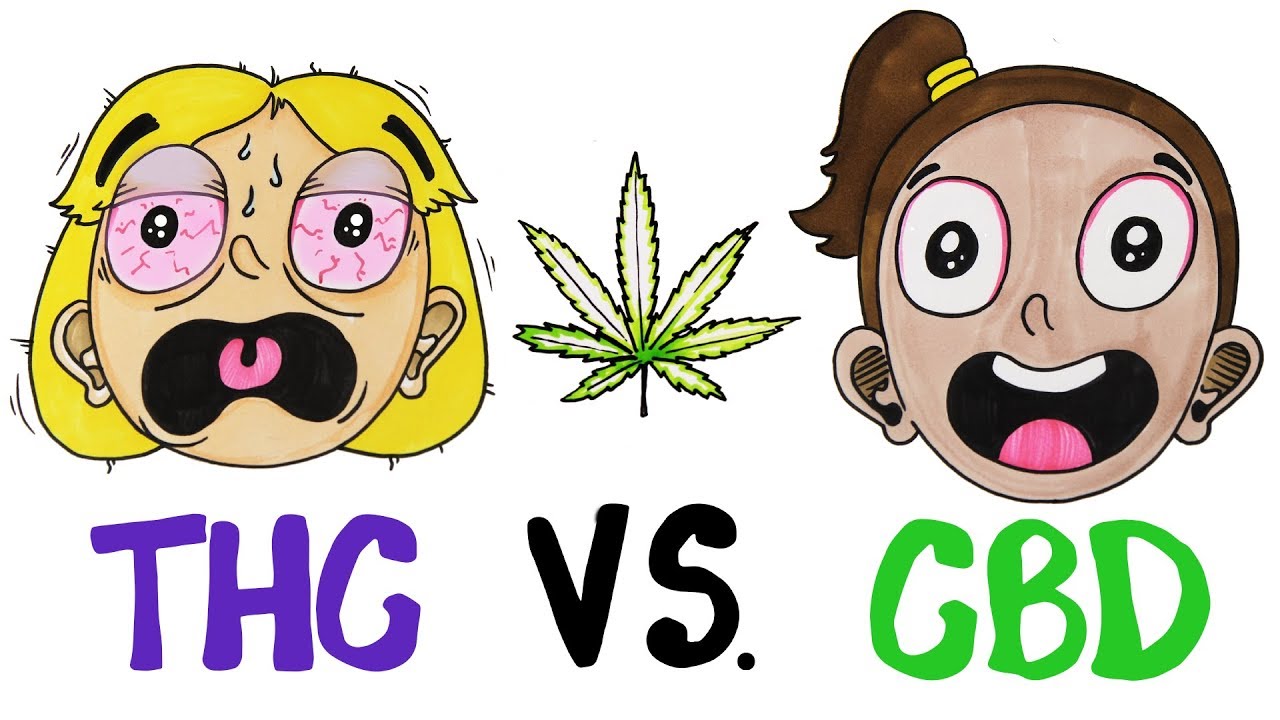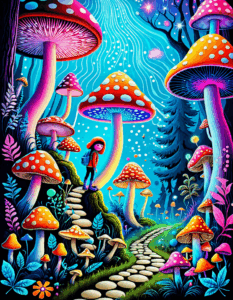In the ever-changing landscape of cannabis and its various compounds, what is THC A has emerged as a topic that deserves our attention. This compound, known as tetrahydrocannabinolic acid, plays a significant role in understanding the marijuana plant and its effects on health and wellness—particularly for our youth. With parents feeling thankful for the information, it’s essential to remember that THC A is non-psychoactive, meaning it won’t get you or your child high like its more familiar cousin, THC. As we dive deeper into understanding what THC A is, we can better equip ourselves to talk about the implications of cannabis use for our children and loved ones.

What is THC A? Understanding the Basics
To put it simply, THC A is the raw, unactivated form of THC. Found in raw cannabis flowers, it’s the compound that transforms into THC when heated through a process called decarboxylation. This process occurs when cannabis is smoked, vaporized, or cooked. As a parent, understanding THC A is crucial when discussing substance use. It allows you to have informed conversations about cannabis’s medical and recreational applications. Grasping the nuances behind what is THC A can help pave the way for fostering open dialogues with our kids about marijuana use and its ethics.
This knowledge becomes even more important as more states are legalizing cannabis. Parents need to be aware of how these changes may impact their families. No longer is marijuana just a party drug; it has potential medicinal benefits that are garnering attention from both healthcare professionals and researchers. By staying educated, we can better help our children make informed choices.

Top 7 Effects of THC A on the Body
Understanding the effects of THC A involves looking at how it interacts with the body. Here are seven key effects that can help you understand its implications:
Research suggests THC A has noteworthy anti-inflammatory characteristics. According to a study from the British Journal of Pharmacology, it can offer relief from chronic inflammation disorders like arthritis. This could be crucial for those battling ongoing discomfort, including young people facing autoimmune issues.
THC A shows promise in shielding brain cells from damage. A notable report from the University of Catania indicates that it may have neuroprotective properties relevant in conditions such as Alzheimer’s disease. This research could redefine how we think about cognitive health, especially for children who might suffer from mental health challenges.
If you know someone undergoing chemotherapy, you’ll be glad to hear that THC A may help reduce nausea and vomiting. Numerous studies reveal this benefit, placing THC A as an essential option for individuals needing symptom relief without psychoactive effects.
Although THC often gets credited with the munchies, THC A can stimulate appetite without causing a high. This can be particularly useful for children recovering from illnesses or surgeries when a solid intake of calories is necessary for their recovery.
Emerging research, including findings from the Journal of Clinical Cannabis Research, hints that THC A might inhibit the growth of particular cancer cells. These exciting possibilities raise vital questions about its future in therapeutic treatments.
Initial investigations propose that THC A can help regulate mood. By interacting with the body’s endocannabinoid system, it may alleviate anxiety and depression symptoms, making it especially relevant during the tumultuous teenage years.
A fascinating twist in the cannabis narrative is that THC A can convert into CBD through fermentation or a similar process. This relationship sheds light on how different cannabinoids interact, a topic that’s gaining traction in wellness conversations.

What is CBD and How Does It Relate to THC A?
Cannabidiol, commonly referred to as CBD, is known for its therapeutic benefits and is another cannabinoid that doesn’t have the high associated with THC. Parents are increasingly considering CBD oil for relieving anxiety without the rush that comes with THC. Understanding what is CBD puts THC A into context, as it highlights the non-psychoactive nature of the compounds available for potential medicinal uses.
Families wrestling with addiction and its consequences often look for supportive methods of treatment. Knowing how THC A and CBD complement one another can be helpful in discussions around holistic approaches. Awareness of both THC A and CBD’s properties empowers parents to explore alternative treatments rooted in science while maintaining open communication with their children.

The Importance of Data in Cannabis Research: What is Data Entry?
Data plays a fundamental role in cannabis research. Understanding what is data entry reinforces the importance of accurate data collection in cannabis studies, especially when looking into compounds like THC A and CBD. Data management can involve collecting patient experiences, side effects, and therapeutic outcomes, providing a clearer picture of what various cannabis compounds can offer.
For parents seeking answers, solid data bridges the gap between skepticism and understanding. It enables healthcare providers to glean insights from patient responses and research findings, leading to more informed advice on THC A and CBD’s implications. As we all want the best for our children, comprehending the evidence behind these compounds is pivotal.

OTP What Is: The Concept of On-The-Premises Consumption in Cannabis
With new legislation, it’s imperative to understand OTP what is—the implications of on-the-premises consumption of cannabis products. As more venues arise, parents must grasp how this could affect community youth. A nuanced approach to cannabis law is essential to discuss openly with children, especially when considering accessibility and the social context of cannabis consumption.
As parents, it’s crucial to ensure that you’re informed about these changes so that you can speak knowledgeably about the associated risks. This educational aspect helps in guiding your children through conversations about legal, safe, and responsible use.
What is the Definition of THC A in Layman’s Terms
To sum it all up, THC A is essentially the raw form of THC and offers various health benefits without the high. What is the definition of THC A? Simply put, it’s a lesser-known but significant compound in cannabis that fills a vital role in medical applications. This straightforward explanation becomes invaluable for parents attempting to clarify cannabis’s role in health discussions with their children.
Navigating conversations about cannabis is not a straightforward task. However, arming ourselves with simple definitions and basic facts about THC A can create a more comfortable environment for these discussions. Open dialogue fosters understanding, reducing the risk of misinformation or harmful assumptions.
Moving Forward: Understanding the Future of THC A
As the world of cannabis science keeps evolving, THC A’s potential continues to reveal new benefits and complications. Parents must continually engage in conversations about cannabis, understanding its influence, legality, and potential therapeutic applications. Educating ourselves may help our children navigate this complicated landscape and make informed decisions regarding their health and choices.
Knowledge is power, especially against the backdrop of addiction challenges. By understanding THC A and its attributes, we can take steps towards having candid conversations about cannabis, ensuring we empower our children and equip them to make wise choices in an ever-shifting context.
In this journey of understanding, what is THC A becomes more than just a question; it lays the foundation for meaningful discussions. We must support each other as we explore the implications of these discoveries together. With compassion and persistence, we can guide our children through the complexities of cannabis use and empower them for a healthier future.
Remember, you’re not alone on this journey. At Mothers Against Addiction, we’re here to help, providing resources and support for families grappling with addiction and its many forms. Let’s keep the conversation going and prioritize our children’s well-being.
What Is THC A and How It Affects You Today
Understanding what THC A is can feel a bit like piecing together a puzzle. THC A, or tetrahydrocannabinolic acid, is the non-psychoactive precursor to THC found in raw cannabis. Unlike its more famous counterpart, THC, which is known for producing that classic high, THC A is associated with potential health benefits. Many researchers are exploring its medicinal properties, particularly in relation to psychiatric disease and other conditions, as the stigma surrounding cannabis continues to lift.
Interesting Tidbits About THC A
Did you know that THC A is only one component of the fascinating cannabis plant? In fact, the transformation from THC A to THC happens through a process called decarboxylation, often triggered by heat. This process is essential to the production of products you might find at places like the Kaiser Lab or even reputed dispensaries. It’s wild to think that a raw cannabis bud won’t get you high until it’s heated! Similar transformations can be seen in other foods we consume too, even in stick butter calories, which can change when cooked.
THC A and Pop Culture
The influence of THC A reaches even into popular culture. Take Bobbi Kristina brown, for example. Her story emphasizes the often-overlooked struggles with substance use that many families face. As parents, we need to be aware of how substances like THC, and its non-psychoactive form THC A, can affect health and well-being. In certain regions, there is an increasing push towards regulation and education about cannabis products. Programs like those found in Region 4 aim to help communities understand these substances better and promote healthier choices.
As we dive deeper into this topic, you might also be curious about how innovation, like the developments seen in Gauth AI, is shaping our understanding of cannabis and its components. By leveraging technology, we can redefine our knowledge about THC A, making it easier than ever for individuals to access helpful information. The conversation about THC A is ongoing, and it’s vital to remain engaged, especially when so many people are navigating addiction and recovery.




























